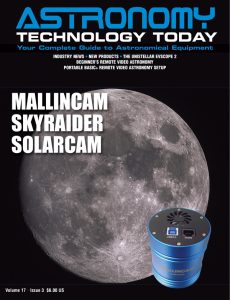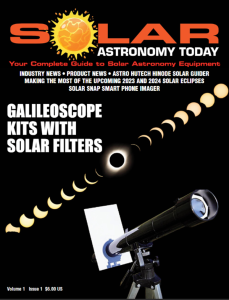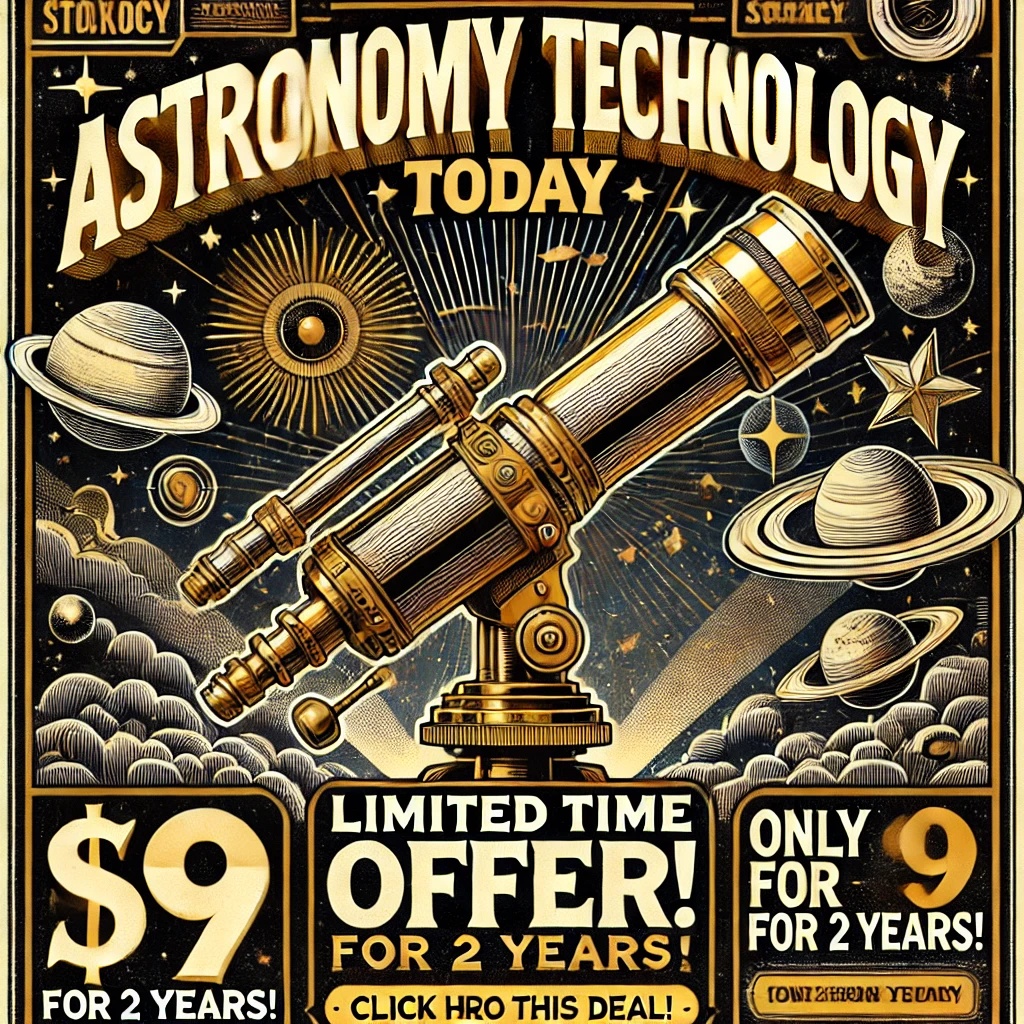The Askar 103APO triplet refractor is a versatile imaging and visual telescope with the option of a 1.0x flattener and 0.8x and 0.6x focal reducer/flatteners. As a modular telescope system, the 103mm Apo has a removable body extension which is required when using the optional .6x reducer as well when using a binoviwer for visual use making this a choice scope for a versatile imaging system. The 103mm aperture offers excellent light-gathering power, resolution, brightness, and contrast, enabling astro imagers to gather plenty of light and detail in the image.
 The Askar 103APO triplet refractor utilizes ED glass and yields high contrast images with pinpoint stars when imaging across a full frame imaging sensor. The telescope with its 103mm of aperture offers a focal ratio of f/6.8 with 700mm of focal length. When utilizing the .8 reducer for imaging the focal length is 560mm. With the .6 reducer, the field of view is widened even further at a focal length of 420mm.
The Askar 103APO triplet refractor utilizes ED glass and yields high contrast images with pinpoint stars when imaging across a full frame imaging sensor. The telescope with its 103mm of aperture offers a focal ratio of f/6.8 with 700mm of focal length. When utilizing the .8 reducer for imaging the focal length is 560mm. With the .6 reducer, the field of view is widened even further at a focal length of 420mm.
The lens tube of the Askar 103APO is crafted using high-quality CNC machining, with anodized and surface spray paint treatment. All of the inner surface of the Askar 103APO’s dew shield is covered with matting felt and the inside of the main tube it is coated with matting paint and equipped with an internal baffle. The retractable design of the dew shield, along with the enlarged locking screw, prevents the dew shield from slipping.
There are two finder bases on both sides of the focuser, which not only eliminates the need for disassembling when changing the position of the finder scope, but also provides additional mounting positions for other accessories.
The tube rings of the Askar 103APO have a light weight of only 750g. The handle has a special slot design, making it able to attach other accessories which need a finder base. The CNC thumb screws of the tube rings enable easy opening and locking without other tools. The standard Vixen dovetail plate, which is compatible with most equatorial or Altitude-azimuth mounts, has additional screw hole position design for adjust position of the tube ring and the plate. The length of the plate reaches up to 290mm, making it more convenient for balancing on an equatorial mount.
The Askar 103APO triplet refractor offers a CNC machined dual-speed R&P large 3.3-inch rigid focuser, which can be compatible with most motorized focusers on the market. It provides 100 focusing travel, equipped with a high-precision heavy composition rotator and adopts laser-engraved scales in the length direction and the circumference direction, which is convenient for user adjustment and information recording. It is also equipped with an enlarged rotator locking screw, preventing image shifting during shooting. Inside the focuser tube there is an anti-reflective internal design and matting paint, providing extra measures to eliminate stray light.
When using the 1x full-frame field flattener the focal ratio does not change as the field flattener is designed to provide a flat field suitable for astrophotography across a full frame camera. The total weight of the flattener is just under 1.3 pounds. The front thread of the flattener is M84x1 and the camera end of the flattener has M54x0.75 and M48x0.75 threads. There is also a built-in M48x0.75 2″ filter thread. The backfocus from the M48 thread is the standard 55 mm. The focal length of the 103APO after installing the flattener is 700.4 mm.
The 0.8x reducer reduces the focal ratio to f/5.4. It features a triplet optical design and provides a wider field image for astrophotography, allowing the capture of larger areas of nebulae or star clusters, or faint and fast moving celestial objects. It supports a 44mm, full-frame image circle and weighs right at one pound. The front thread is an M84x1 and the camera end of the reducer provides M54x0.75 and M48x0.75 threads, allowing for the connection of a variety of cameras. In addition, an internal M48x0.75 thread allows for the attachment of 2″ threaded filters. The Backfocus from the M48 thread is the standard 55 mm. Once installed, the 0.8x reducer changes the focal ratio of the 103APO to f/5.44 and the focal length to 560.32 mm.
The 0.6x reducer brings the focal ratio down to F4 while also providing field flattening. Weighing right at two pounds, the reducer offers a four-element (quadruplet) optical design supporting a 44mm, full-frame image circle. The front thread is an M84x1 and the camera end of the reducer provides M68x1, M54x0.75, and M48x0.75 threads, allowing for the connection of a variety of cameras. In addition, an internal M48x0.75 thread allows for the attachment of 2″ threaded filters. The Backfocus from the M48 thread is the standard 55 mm. The 0.6x reducer changes the focal ratio of the 103APO to f/4.08 and reduces the focal length to 420.24 mm.
For visual use, the telescope offers a detachable lens tube design and can be used with a binoviewer. It can easily achieve focus when connected to 1.25″ or 2″ diagonals or various eyepieces.
Specifications of the Askar 103APO triplet refractor include:
- Focal Ratio: f/6.8
- Optical Design: Refractor
- Telescope Aperture: 103mm (4.06″)
- Number of Refractor Elements: Triplet air-spaced APO (including one ED glass)
- Focal Length (mm): 700.4 mm
- Focuser Style: Rack & Pinion
- Focuser Size: 3.3″
- Focuser Speed: Dual Speed
- Total length: 600mm: (when the dew shield is contracted)- 711mm (when the dew shield is extended)
- Telescope OTA Weight (lb.) – 10.47196 lb.
- Total Weight without Counterweights (lb.): 12.13 lb.
- Refractor OTA Length – Extended (in.): 27.99″
- Refractor OTA Length – Retracted (in.): 23.62″
You can learn more about the Askar 103APO triplet refractor here.

 And to make it easier for you to get the most extensive news, articles and reviews that are only available in the magazine pages of Astronomy Technology Today, we are offering a 1-year magazine subscription for only $6! Or, for an even better deal, we are offering 2 years for only $9. Click here to get these deals which only will be available for a very limited time. You can also check out a free sample issue here.
And to make it easier for you to get the most extensive news, articles and reviews that are only available in the magazine pages of Astronomy Technology Today, we are offering a 1-year magazine subscription for only $6! Or, for an even better deal, we are offering 2 years for only $9. Click here to get these deals which only will be available for a very limited time. You can also check out a free sample issue here.
The Sun is more active than it’s been in years and if that’s not enough, we have the Annular Solar Eclipse on October 14, 2023 and the Total Solar Eclipse on April 8, 2024! If you’d like to learn more about the technology behind solar observing, solar imaging and more, you can check out our new monthly magazine – Solar Astronomy Today. It’s free to read, no subscription needed and available here. And if you are preparing for the upcoming eclipses and want to know your equipment options from solar glasses to the most out of this world solar viewing and imaging options, check out our free publication – The Definitive Guide to Viewing and Imaging the Sun – simply click here and enjoy reading!



